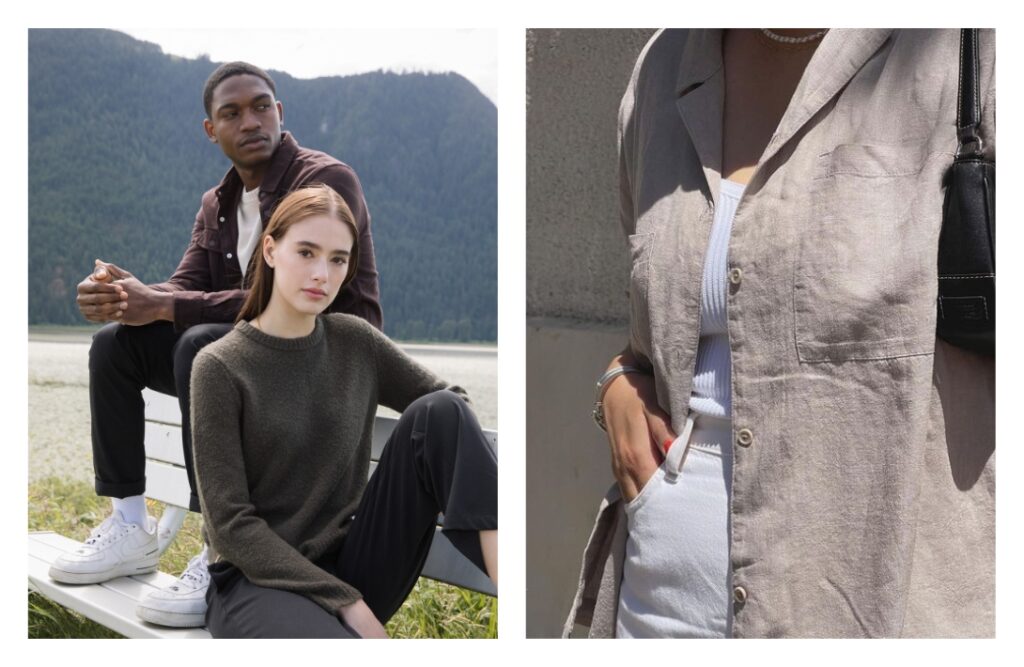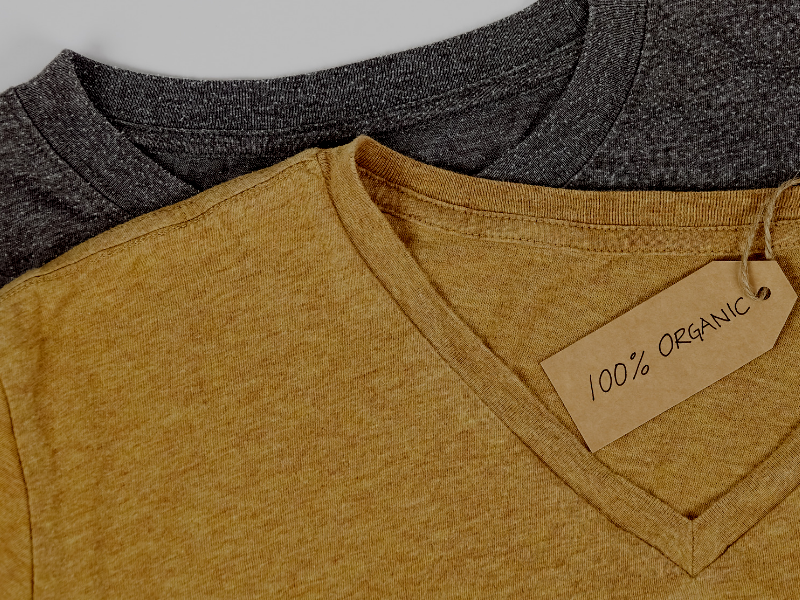Best News On Deciding On Bamboo Clothing
Wiki Article
Why Is Hemp Stronger, More Durable, And More Biodegradable Than Cotton?
Hemp is considered more biodegradable due its natural properties as well as the way it is grown. Here's why- Biodegradability-
Natural Fibers - The hemp's fibers are biodegradable. When they are discarded hemp textiles and clothing disintegrate naturally, and then return to the environment without leaving behind the long-lasting debris. This contrasts with synthetic fibers such as polyester, which take many years to decompose.
Hemp textiles are free of chemical additives and synthetic chemicals which may hinder biodegradability. Contrary to this, some cotton fabrics are treated with synthetic chemicals like dyes and finishes, which could interfere with biodegradation process.
Durability-
Hemp fibers can be characterized by their strength and durability. Clothing and textiles made from hemp are less likely to get damaged, and last longer than cotton-based products. Hemp garments are durable and washable many times before they show indications of wear.
Hemp fabric is less prone to pilling which is the formation of tiny, fuzzy balls at the fabric's surface. This attribute helps to improve their overall durability and quality.
Regenerative Agriculture-
Soil Health- Hemp cultivation is regenerative when it is done responsibly. Hemp cultivating sustainably has a deep-rooted system that can prevent soil compaction. This root system also helps to prevent erosion. This regenerative feature could make the soil more suitable for future cropping.
Low environmental impact Sustainable hemp cultivation methods often use minimal pesticides or herbicides to limit environmental harm. The cultivation of cotton is a traditional method that can result in soil degradation as well as water pollution, among other environmental issues due to the use of synthetic chemicals.
Water Efficiency-
Low Water Requirements Hemp typically requires less water than cotton for growth. Due to its drought-resistant properties, it can be grown without much or no irrigation. It is a water-efficient option particularly for areas with limited resources.
Hemp is also a viable option in the crop rotation system to improve soil health, decrease the risk of disease and reduce depletion. In conventional cotton farming the crop rotation process is less common.
Hemp is a flexible material that can be used to a variety of products, such as building materials clothing, textiles and paper. Hemp is grown in a variety of ways, including sustainable and regenerative.
Although hemp has many advantages, it is important to be aware that cotton and hemp can both be made in a sustainable or non-sustainable method, based on methods of farming and processing. The choice of hemp products manufactured using environmentally friendly and ethical practices will maximize its environmental benefits. Selecting organic cotton products can also reduce the environmental issues associated with traditional cotton production. View the best hemp clothing for more info including hemp apparel wholesale, hemp clothing, jeans hemp, hemp shirts mens, hemp swimsuit, hemp sweatshirt, hemp clothing near me, hemp button down shirt, hemp mens jeans, hemp apparel and more.

What Is The Hemp-Based Clothing's Performance To Other Fibers In Terms Of Quality And Function?
Hemp clothing offers a variety of advantages with regard to functionality and design over conventional fabrics, as well being more eco-friendly. Hemp clothing is a great environmentally friendly option due to its dry and breathable.
Hemp fibers are very absorbent and moisture-wicking. This makes hemp clothing suitable to wear in a variety of climates. They can help you stay dry and cool, and stop the growth of bacterial.
Temperature Regulation
Hemp clothing has excellent thermoregulating capabilities. Hemp clothing can help to keep you warm by capturing heat close to your body and help cool you down during hot temperatures by allowing heat and moisture to escape. This natural thermoregulation can reduce the frequency of changes in clothing.
Durability and long-term durability-
Hemp fibres are known for durability. Hemp clothing tends to be more durable and resistant wear and tear compared to other traditional fibers such as cotton. This means hemp clothing can last for a longer time. This also means less need for frequent replacements.
UV Protection
Hemp fibers protect skin from UV radiation, providing natural UV protection. This feature can be especially useful for outdoor activities and sports.
Biodegradability:
Hemp clothing is degraded as time passes. This feature helps in reducing the impact on the environment of textile waste. Synthetic fibers can be buried for lengthy time.
Low environmental impact
Hemp farming typically uses fewer chemical pesticides and herbicides that conventional cotton. It also uses less precious water resource. This means it is a more sustainable choice. The eco-friendly qualities are boosted by organic hemp farming.
Carbon Sequestration
Hemp is a great plant to remove CO2 from the atmospheric air. In this way, hemp is able to be used as a carbon sink to help reduce greenhouse gas emissions.
Sustainability and crop rotation
Hemp can easily be integrated into crop rotation systems to enhance overall soil health. It also lowers the risk of soil loss or the accumulation of disease. This environmentally friendly farming method is possible due to sustainable farming practices.
Versatility:
Hemp fibers can be mixed together with other materials (such organic cotton or recycled polyester) to create eco-friendly and high-performance fabric blends. This flexibility allows it to make environmentally sustainable and innovative textiles.
Low Toxicity
Hemp fibres are low in toxicity due to nature and do not require chemical processing. They reduce the environmental impacts of the production of textiles.
Apart from hemp's numerous ecological and functional advantages, it is crucial to be aware that sustainability of clothes can also be affected by factors such as dyeing methods transport, ethical labour practices. Consumers who want to be environmentally conscious should select clothing brands that use hemp and other sustainable fibres and place a high value on transparency and ethical manufacturing practices. View the top hemp clothes advice for blog recommendations including hemp hoodie, patagonia island hemp pants, organic hemp underwear, jungmaven clothing, hemp shorts mens, hemp shorts mens, mens hemp t shirts, hemp dress, hemp apparel, jungmaven t shirt and more.

What are the main differences between bamboo and hemp fibers?
Both bamboo and hemp fibers are plant-based fibres used to create textiles. Each one has distinct qualities and features. These are the main differences between hemp and bamboo fibers- 1. Plant Source-
Hemp- Hemp fibers are taken from the stalks of the hemp plant, and specifically the outer bast fibers. Hemp has been utilized to serve a variety of purposes throughout the years. Hemp is a rapidly growing, versatile plant.
Bamboo fibers- Bamboo fibers are derived by removing the woody part of the bamboo plant. Bamboo is a fast-growing species of grass, known for the speed of renewal and longevity.
2. Fiber Characteristics
Hemp The fibers of hemp are strong and durable. They are some of the strongest natural fibres, and soften with every wash. They are suitable for fabrics that last.
Bamboo It is a soft, silky fiber. They may be more fragile and less robust than hemp fibers, but are still coveted for their softness against skin.
3. Texture, Feel and Look-
Hemp- Hemp fabric has an extremely rough and textured texture, especially in its natural state. It's soft, but it has a different feel to bamboo.
Bamboo- Bamboo is soft, smooth, and silky. It's been described as having the feel of silk and cotton.
4. Breathability (and moisture-wicking)-
Hemp- Hemp is naturally and breathable. It also absorbs water. They keep you cool and dry even in the hottest temperatures.
Bamboo The bamboo fibers are highly breathable and moisture-wicking. They also have micro-gaps which increase their ability to regulate moisture and temperature, keeping you comfortably in any weather.
5. Environmental Impact-
Hemp- Hemp is considered an eco-friendly fiber because of its water-required minimum rapid growth rate, as well as resistance to pests, which reduces the need for pesticides and herbicides. It is also able to capture carbon in its growing process.
Bamboo is a popular choice for environmentally friendly building materials. It grows quickly, requires very little water and is able to be grown without pesticides or herbicides. Moso is one of the bamboo varieties that is most sustainable.
6. Processing-
Hemp Fibers- Hemp fibers are subject to a lot of processing that is required to separate out the outer bast from the wood core. Processing may involve Retting (decortication) or mechanical separation, or retting.
Bamboo- Bamboo fibers are typically obtained through a chemical process called the rayon or viscose process. This process involves breaking down bamboo pulp by using chemical. Although this can cause environmental concerns when not managed responsibly, some bamboo textiles make use of closed-loop systems to decrease the waste of chemicals.
7. Versatility-
Hemp- Hemp can be used to create a range of products, such as clothing as well as textiles, paper and other building materials.
Bamboo- Bamboo is primarily used in the production of textiles and clothing. But, it may be found in various other items like bed linen and towels.
Summary- Both hemp and Bamboo have distinct advantages and are both sustainable. Choose between hemp and bamboo according to the qualities and qualities you're searching for as well as your preferences regarding the environment. Read the top rated bamboo clothing for site info including bamboo ladies clothing, bamboo t shirts mens, mens boxer shorts bamboo, mens bamboo boxer shorts, bamboo cotton shirts, bamboo twirl dress, bamboo tank tops, bamboo tee shirts wholesale, bamboo baby clothes, kyte pajama and more.
